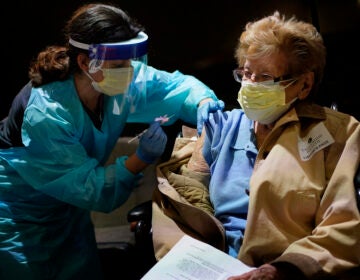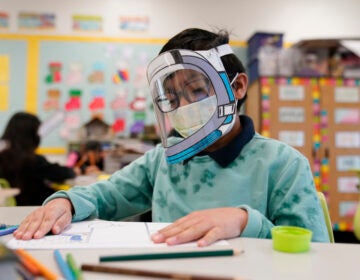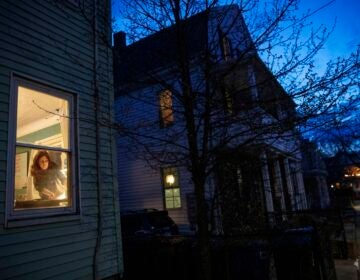Philadelphia engineer creates backup ventilators for coronavirus pandemic
Designers sprint to create a basic model for COVID-19 patients that can be 3D-printed.
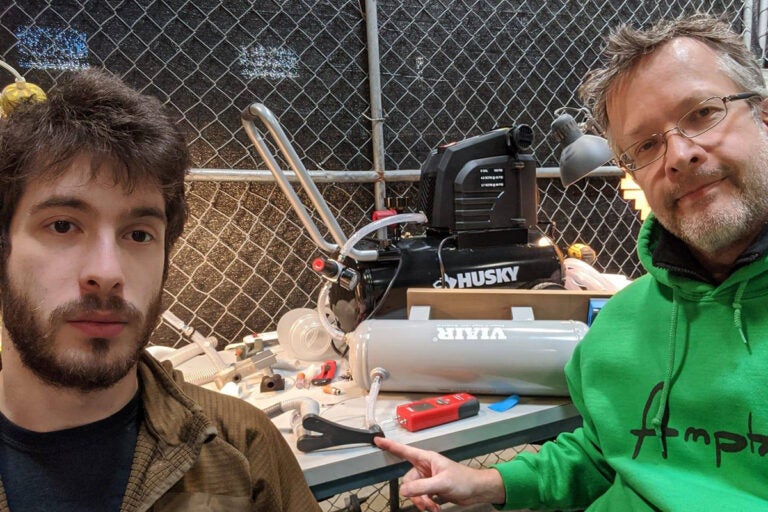
Marek (right) and Michał Swoboda of the start-up Right-Air created a basic ventilator that can be 3D printed as a backup for hospitals during this coronavirus outbreak. (Courtesy of Marek Swoboda)
This story is from The Pulse, a weekly health and science podcast.
Subscribe on Apple Podcasts, Stitcher or wherever you get your podcasts.
The request seemed so unfeasible, Drexel University engineer Marek Swoboda let out a laugh. “Two weeks, 500 units, completely impossible,” he said.
The University of Pennsylvania Health System had approached Swoboda in March to ask if he and his team could create basic ventilators that could be quickly produced, for use as backups during this pandemic. Many hospitals wanted to be prepared for potential worst-case scenarios, to be able to serve a potential onslaught of patients.
“We are part of something called Plan C or D, and they asked whether we could build something for them in a very short amount of time, in two weeks,” he said.
Swoboda runs a small start-up called RightAir that’s been working on designing ventilators for patients with the chronic lung disease COPD. So he knows ventilators, but this request didn’t seem doable. Still, the team got to work. They looked around to learn what was already out there, they brainstormed, and kept at it.
“It was a great sprint, design sprint. In five days, we were able to test the first prototype.”
They came up with a very simple ventilator called the “Y Vent” because its shape looks like the letter Y. It can be 3D-printed, and used on intubated patients.
“Then you connect this ventilator, and it creates positive pressure to create inhale and exhale actions for patients,” said Swoboda. It does the work of breathing for compromised patients, who cannot breathe on their own.
The ventilator is small and connects to pressure lines Swoboda said are standard in hospitals. The design will be released as open source, available to anybody who wants to print it. The materials cost about $10. It’s assembled using a glue gun, in about 10 minutes.
Swoboda’s team drew on concepts from the 1960s, ventilators that were used by the Army or rescue teams.
“These are very simple, rugged devices, because there are no moving parts inside,” he said. It’s a bare-bones option that doesn’t have the full functionality of a regular hospital ventilator.
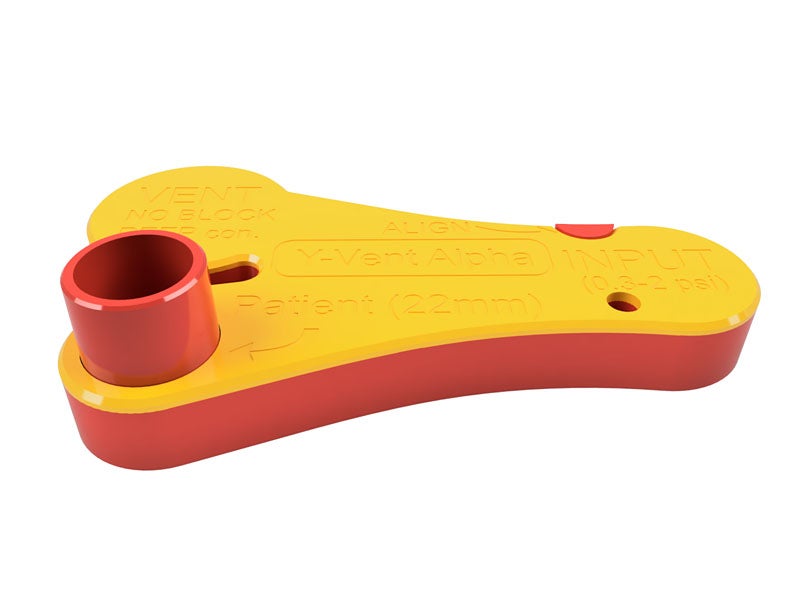
Swoboda is quick to point out that the Y Vent is not a Food and Drug Administration-approved medical device. It could only be used in very specific situations that are legally defined, if there were no other way to keep a patient alive. But he is proud of what they’ve created in such a short time.
Inventing under pressure
The design sprint to the finish line was stressful, Swoboda said.
“I hate this process, to be honest with you, it is very painful,” he said. “On the other hand, most research and development engineers work very well under pressure. I don’t know why, but, it’s a rule.”
Swoboda said he thinks the time pressure made them hyper-focused.
“When people have nothing to lose, then risk doesn’t really play a role,” said John Kounios, a professor of psychology at Drexel University. Kounios studies creativity and problem-solving, and wrote a book called, “The Eureka Factor, Aha Moments, Creative Insight and the Brain.”
“Imagine that you’re an early human on the savanna, and way off in the distance you see a lion,” he explained. “You can’t make a mistake, or you’re dead. So you have anxiety, you go into a mode of thought which we might call analytic, you think through everything you’re going to do, to avoid mistakes.”
He said some people are channeling the threat and anxiety of the current situation into an inventive mode; not overthinking things, not looking at every single possibility, but choosing a promising path and taking it. Research labs across the country have kicked into high gear, developing vaccines, working on new protective gear for health care providers, or studying different aspects of treating the virus’ symptoms.
But usually, Kounios said, breakthroughs happen when we’re relaxed. “People tend to have these eureka moments when they’re in a positive mood, when they’re feeling relaxed and secure, and sort of enthusiastic but peaceful at the same time, that’s when these eureka moments are most likely to occur.”
Swoboda hopes his ventilator will not have to be used during the coronavirus outbreak, but he said the moment of finally getting to a design that would work was great, despite the stressful path of getting there.
“You get the solution, you cracked the code, the feeling of excitement, it is ecstasy.”
WHYY is your source for fact-based, in-depth journalism and information. As a nonprofit organization, we rely on financial support from readers like you. Please give today.





![CoronavirusPandemic_1024x512[1]](https://whyy.org/wp-content/uploads/2020/03/CoronavirusPandemic_1024x5121-300x150.jpg)
